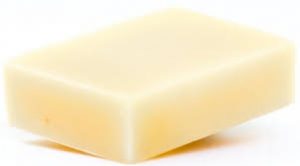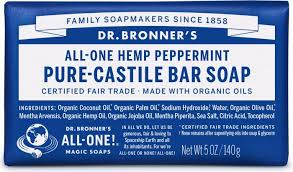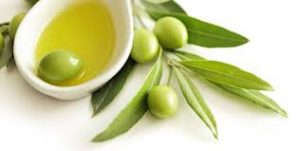In the beginning of making soap, I started with an Olive, coconut, and palm oil soap recipe, which worked very well. Over the years and depending on supply deliveries, supplies on hand, environmentalism, and ingredient costs, we came up with 6 very tried and true soap recipes, well, except maybe this pure castile soap recipe one.

Traditionally, Castile soap was a 100% olive oil based soap. Yet the recipes of today seem to vary – same as the history of Castile soap’s history. As wonderful as a pure olive oil soap will be, it can be temperamental to make. I’ve made Castile a few times and this is what I’ve discovered:
- people say they want a plain unscented soap, yet buy the scented one, and the plain soaps ended up in the ‘sale’ basket
- all my castile olive oil bars tended to have soda ash, from high pH, from water/lye/oil saponification process, in the corners and edges of the soap logs
- the finished bar does not bubble very much, it is the coconut that creates large bubbles
- people think that if the bar doesn’t bubble lots then something is wrong with it
- multiple oil soap bases make better bars
- last I heard from whatever-powers-that-be, is that up to 15% coconut oil can be used and still be considered a pure ‘castile’ bar

This makes about 25 4-ounce bars, so dividing it in half to make test batches would work well.
Pure castile soap recipe:
- 64 oz of Olive oil
- 23.4 oz water
- 8.7 oz lye crystals
- for a total of 96.1 oz of soap base
But if you still want a less-temperamental bar with bubbles, go with my #1 recipe with Olive and Coconut oils:
- 51.2 oz of Olive oil
- 12.8 oz of coconut oil (will be approx. 20% of the oils)
- 23.4 oz water
- 8.7 lye crystals
- for a total of 96.1 oz of soap base

Directions for making soap
Before starting gather all the equipment and ingredients you will need for your soap
Mixing your ingredients:
- Put on your protective clothing, apron, safety goggles, gloves etc
- Measure your water and pour it into the container you will be using for your lye/water mix
- Measure out your lye (sodium hydroxide)
- Slowly add the lye to the water, stirring to be sure it mixes well. This should be done in a well-ventilated area as the fumes can be quite strong. This will only last for 15 seconds or so. Stir until the lye is completely dissolved in the water. It will heat up to about 180 degrees and can now be put aside to cool down.
- While the lye/water is cooling use a scale and measure each of your soap oils and put them into your stainless steel pot.
- Place this pot on your stove or hot plate and turn on low heat to approximately 130 degrees.
- Once the oils have heated to 130 degrees take off the stove or hot plate and let them cool down to about 100 degrees.
- When the lye/water mix and the oils are both cooled down to about 100 degrees they are ready to be mixed.
- Slowly add the lye/water mix to your soap oils and stir you can use a stick blender and hand mix. Mix the soap until it traces. This is when the soap begins to thicken; you can test this by using your spoon to drizzle the liquid into the pot. You will see a trace that stays on the surface of the soap mixture.
- Once the soap has traced this is the time to add your scent and color.
- Mix the scent and color in well
- Pour this mixture into the lined molds, cover it with a piece of cardboard or plastic, put it to bed (place a blanket over the soap mold), and let set for a day or two.
- Once it has sat for a day or two, remove the soap from the mold cut and put it out to cure for 4 to 6 weeks.
Here is Wikipedia’s page on what is a pure Castile soap recipe.
#handmadesoap #naturalsoap #makingsoapnaturally #soapmaking #soapmaking #soaps #artisansoap #bathandbody #cpsoap #coldprocesssoap #etsy #soapbase #soapcrafter #soapmaker #soaping #soapcrafting #soaphandmade #soap #giftidea #christmas #barsoap #handmadesoap #natural #organic #skincare #coldprocess #soapsupplies #soaprecipes
© 2023, Tes. All rights reserved.